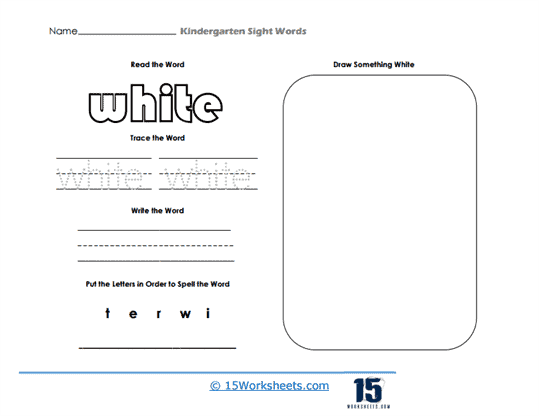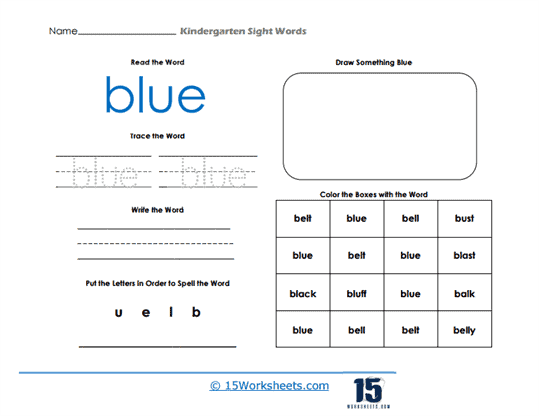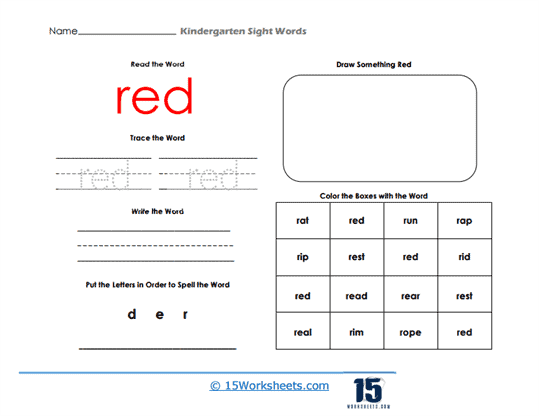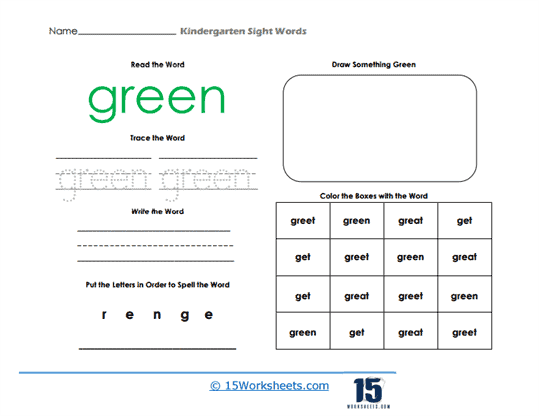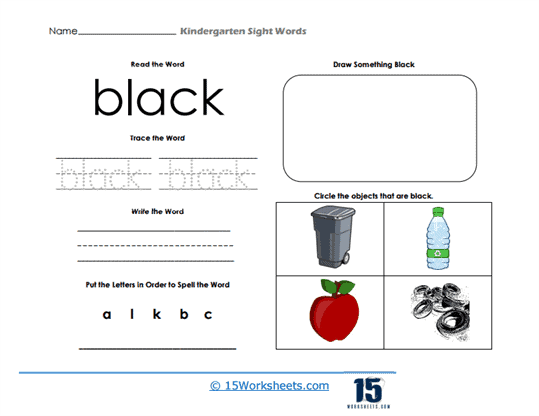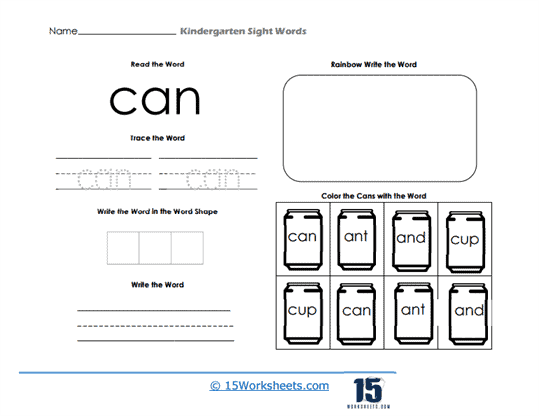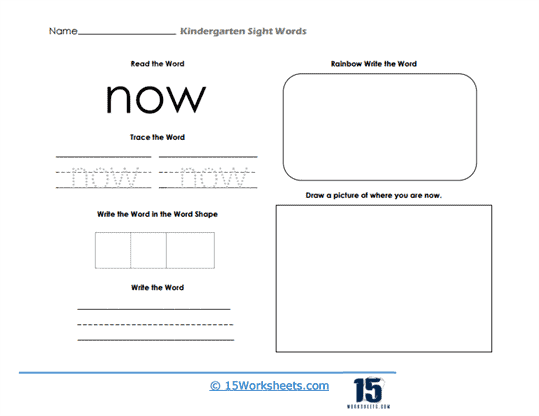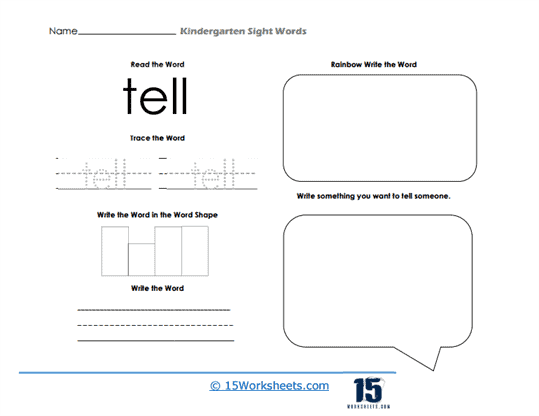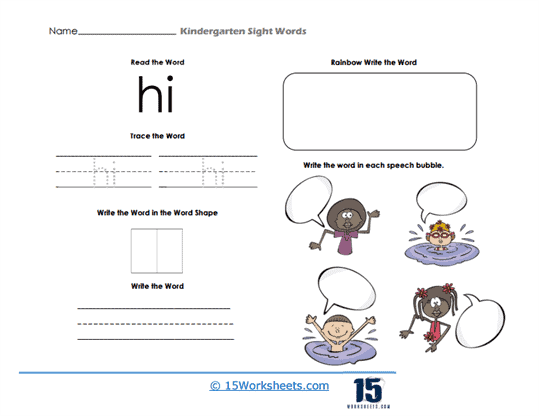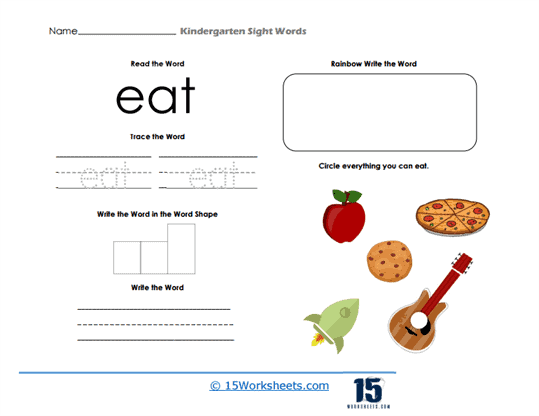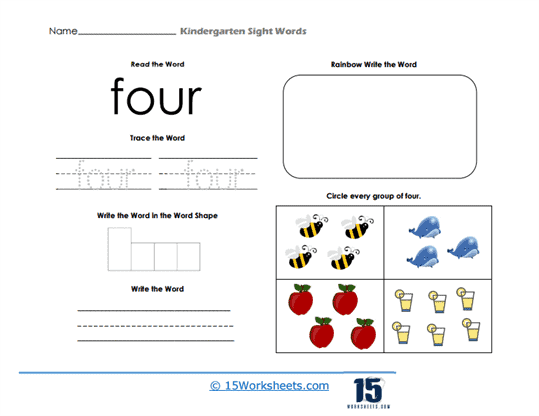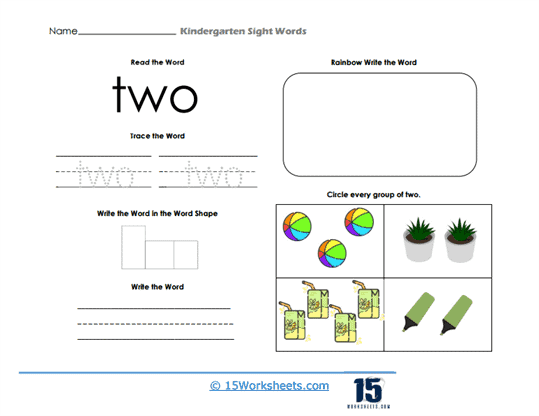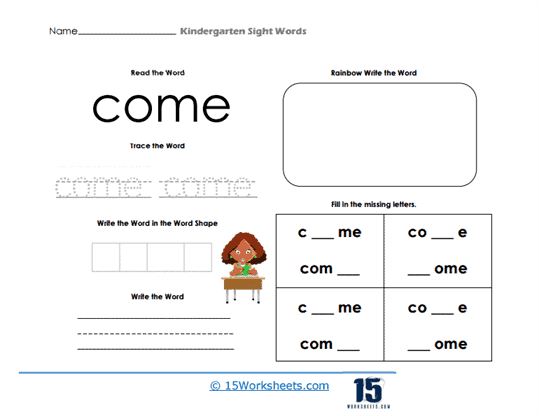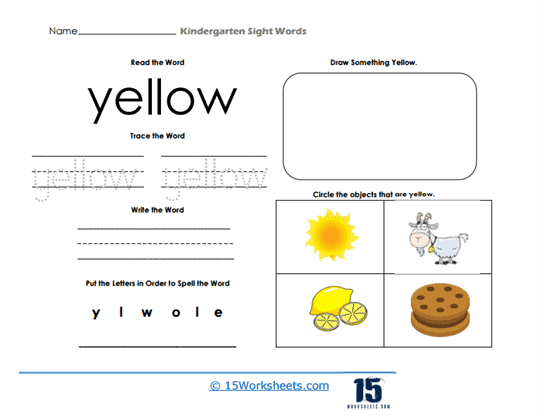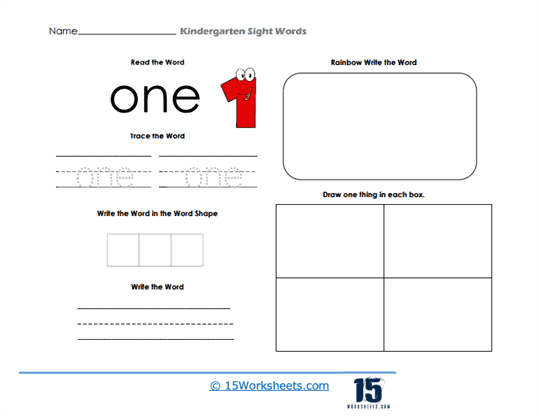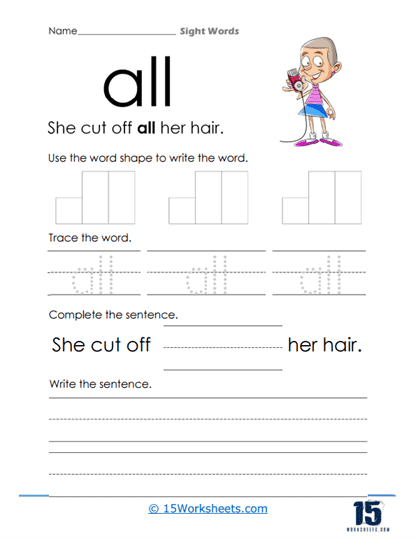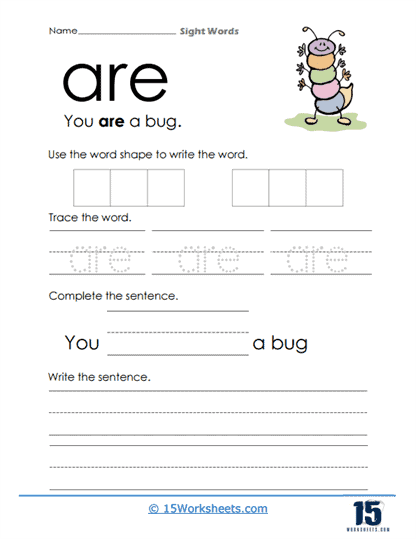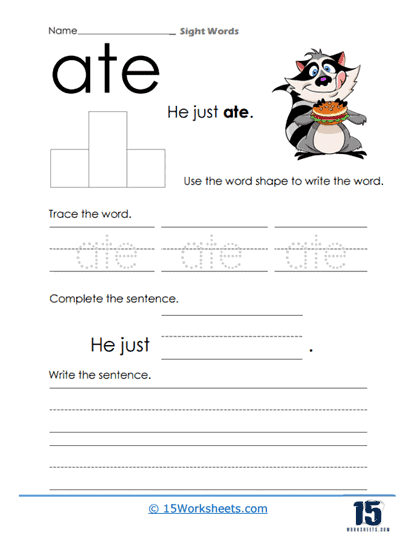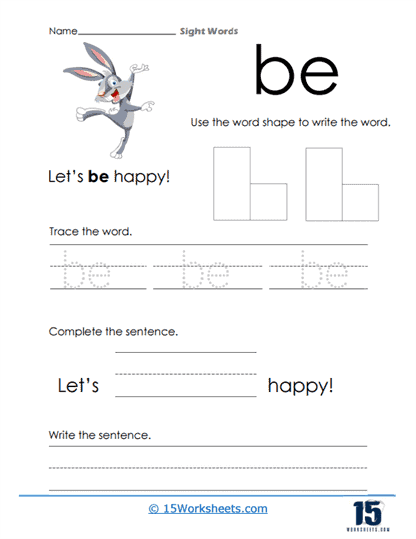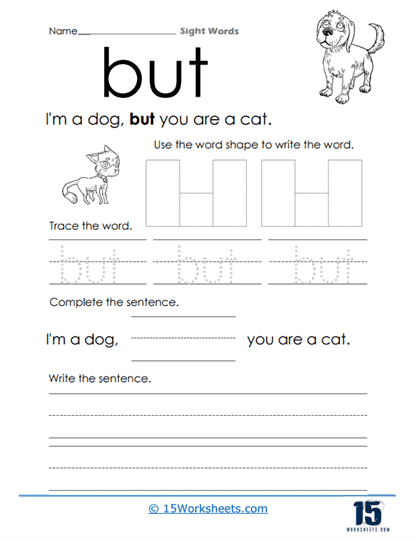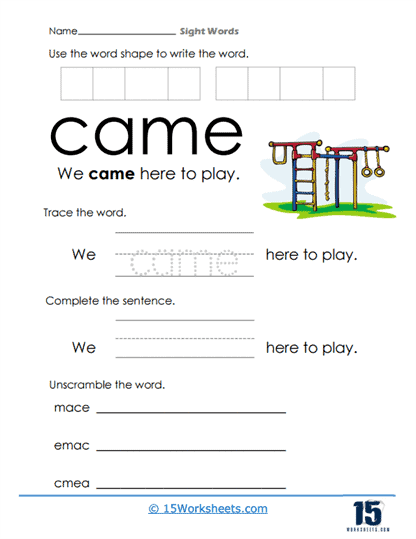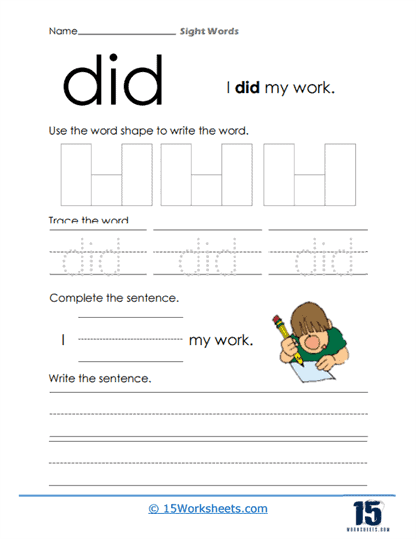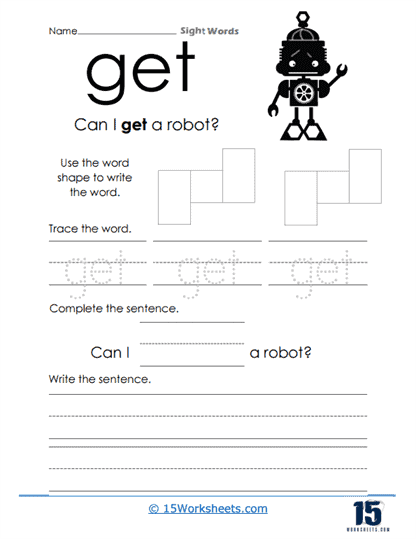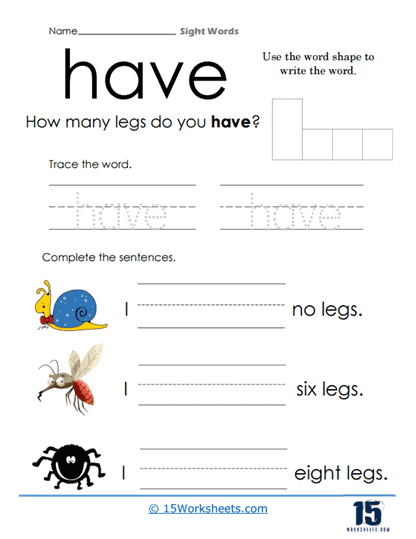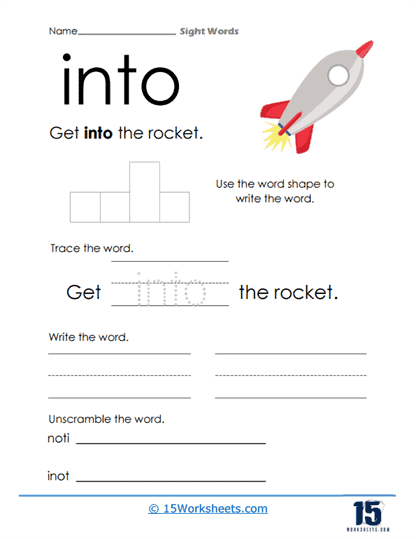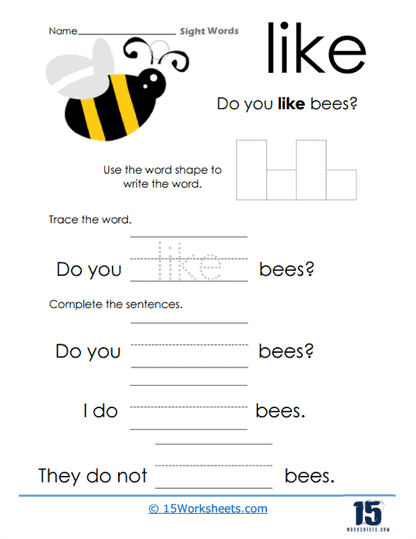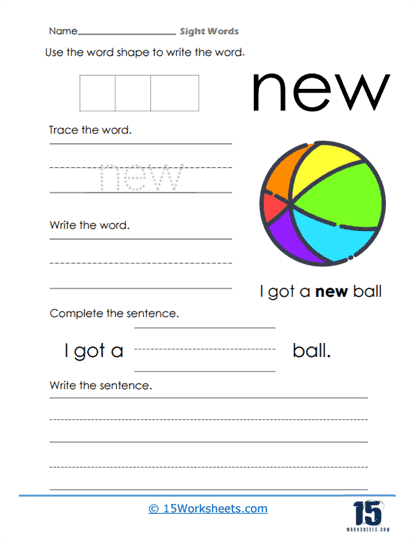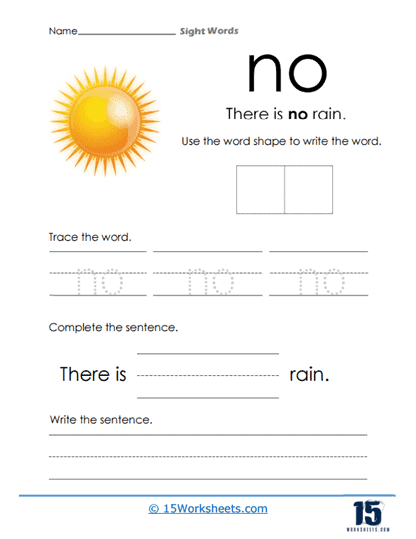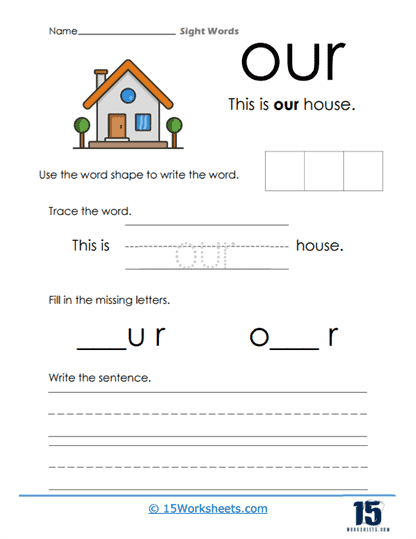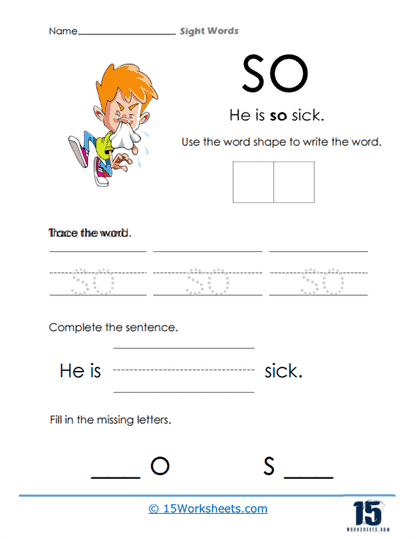Sight Words Worksheets
All About These 15 Worksheets
This series of Sight Words worksheets is designed to help students develop fluency and automaticity in recognizing and reading common sight words. Sight words are words that frequently appear in written texts and are not easily decoded phonetically. By focusing on sight words, students can build a strong foundation in reading and enhance their reading comprehension. Through a variety of interactive exercises, students will engage in activities that promote sight word recognition, spelling, reading, and writing. These worksheets also provide opportunities for students to practice sight words in a fun and engaging way, helping them become confident and proficient readers. Through these worksheets, students will:
- Practice recognizing sight words;
- Practice spelling sight words by filling in missing letters or completing word-building exercises;
- Write sight words, reinforcing their spelling and handwriting skills while developing familiarity with commonly used words;
- And read and complete sentences using sight words, fostering their ability to understand sentence structure and meaning.
Through this engaging series of Sight Words worksheets, young learners will develop fluency and automaticity in recognizing and reading common words that appear frequently in written texts. By participating in a variety of activities that promote sight word recognition, spelling, reading, and writing, students will enhance their reading skills and build a strong foundation in literacy.
These worksheets also provide opportunities for hands-on exploration, problem-solving, and cognitive development. By engaging with these exercises, students will develop a love for reading, improve their reading fluency and comprehension, and become confident and proficient readers. Ultimately, this collection serves as a stepping stone for future reading success, empowering students with the skills necessary to navigate the world of written language with ease and confidence.
What are Sight Words?
Sight words, also known as high-frequency words, are common words that children are encouraged to recognize and read quickly without needing to sound them out. These words often appear frequently in written text and may not always follow the regular phonetic rules of the language, making it difficult for children to decode them using phonics alone.
Examples of sight words in English include “the,” “and,” “is,” “in,” “you,” and “it.” By learning to recognize and read sight words automatically, children can improve their reading fluency and comprehension, as they can focus their mental energy on decoding and understanding more challenging words and sentence structures.
Sight words are typically taught using a combination of repetition, visual cues, and context. Some common strategies for teaching sight words include:
- Flashcards – Introducing and practicing sight words using flashcards can help children become familiar with the words and improve their recall.
- Word Walls – Displaying sight words on a classroom or bedroom wall provides a visual reminder and can encourage children to practice reading the words regularly.
- Games and Activities – Incorporating sight words into games and engaging activities, such as word bingo, memory games, or word searches, can make learning more enjoyable and memorable.
- Reading and Writing Practice – Encouraging children to read and write sentences using sight words helps them understand the context in which the words are used and reinforces their learning.
- Repetition and Review – Regularly reviewing and practicing sight words can help children commit them to their long-term memory, making it easier for them to recognize the words when they encounter them in text.
It’s important to introduce sight words gradually and consistently, allowing children to master a small set of words before introducing new ones. This approach helps build their confidence and ensures they have a solid foundation for reading fluency and comprehension.

